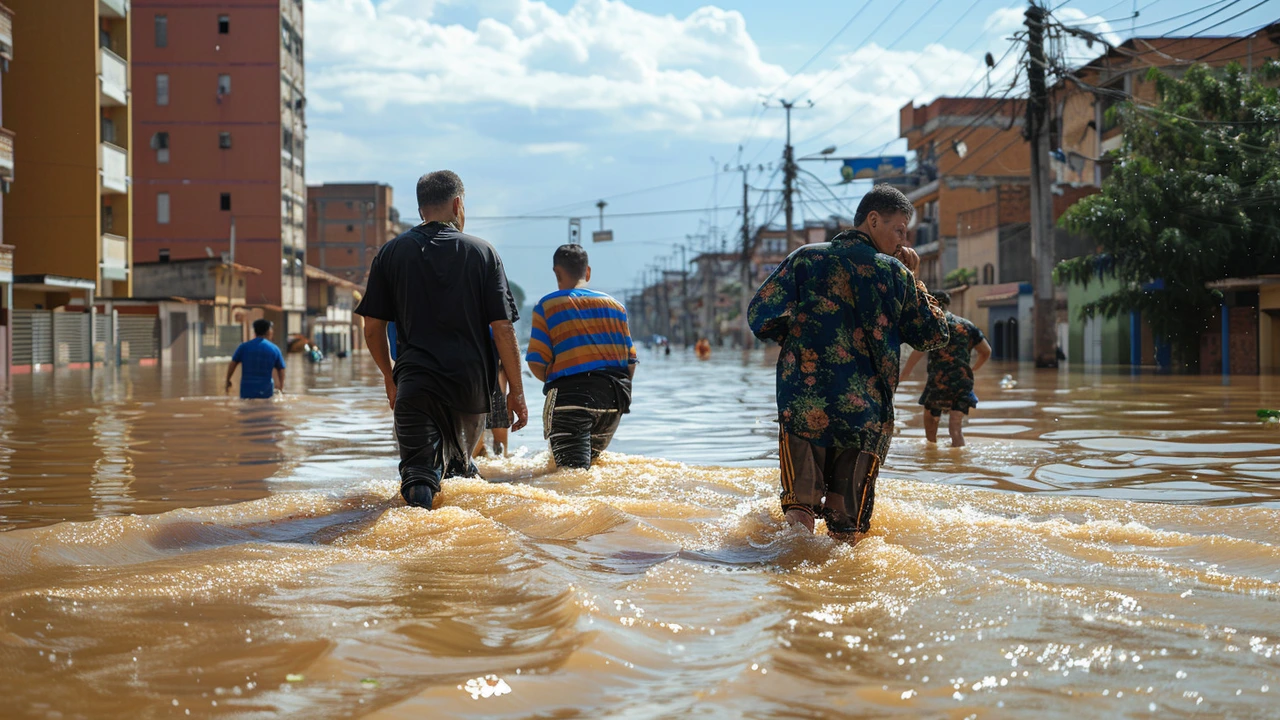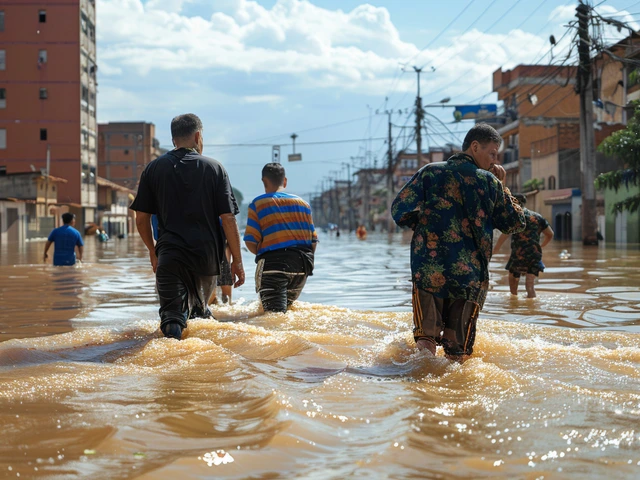Crisis in Brazil: Catastrophe Hits as Rio Grande do Sul Faces Deadly Floods and Landslides
In a sobering display of nature's force, the southern state of Rio Grande do Sul in Brazil has been devastated by severe flooding and landslides, leading to a tragic death toll of nearly 60 individuals and displacing close to 30,000. The heavy rains exceeded norms significantly, causing rivers to swell and hillsides to collapse, subsequently inundating towns and villages underneath mud and debris.
The calamity not only claimed lives but also left numerous residents without shelter, food, or basic amenities. In the face of such adversity, emergency services have mobilized, deploying across the region with recovery efforts underway. Struggling through muddied roads and broken infrastructure, first responders have been a crucial force, providing much-needed relief and support to the victims and their families.
Immediate Response and Emergency Measures
As the region confronts this severe weather event, the immediate focus has been on rescuing those trapped by the floodwaters and landslides as well as providing temporary shelter to the thousands who have been forced to evacuate their homes. Emergency teams, comprised of local, state, and federal personnel, alongside volunteers, are working tirelessly to address the immediate needs of the affected population. This includes setting up camps with essential services such as medical care, clean water, and food supply.
The national government has stepped in, declaring a state of emergency and releasing funds aimed at assisting those in dire need. Relief operations are being coordinated meticulously to optimize resources and manpower in reaching out to every single person impacted by this disaster.
Challenges and Recovery Prospects
While the primary aim is the safety and well-being of the people, the damage to infrastructure presents a monumental challenge in terms of recovery. Many roads, bridges, and public buildings have sustained significant damage, complicating the efforts not only of rescue teams but also of aid delivery and eventual reconstruction. The path to recovery is anticipated to be long and arduous, with a focus on rebuilding the damaged infrastructure and bolstering the region's resilience against future natural disasters.







Write a comment